Tutorials: How to use screen mirroring on Windows 10?
Windows 10 has been one of the most popular versions of Windows OS. With most users installing this version on their systems, knowing about the extended facilities like screen mirroring on Windows 10 is essential.
In this tutorial, we will explore the different methods of screen mirroring on Windows 10, both wired and wireless. Whether you want to mirror your Windows 10 PC to a smart TV or mirror your iPhone or Android device’s screen to your Windows 10 computer, we’ve got you covered.
Let’s start.
Why do we need screen mirroring on Windows 10?
As a Windows user, your life will be much easier with screen mirroring Windows 10. You will have many benefits related to productivity, collaboration, and entertainment.
On a larger display, we can enjoy our favorite content, such as videos, photos, and presentations. And we can also collaborate and share your Windows 10 screen with your staff and colleagues during meetings or presentations.
However, certain apps or media content may not be compatible with screen mirroring, and there may be slight variations in screen mirroring capabilities between Windows 10 and 11. Your PCs must be Miracast-enabled for easy screen mirroring between Windows 10 and 11. Otherwise, you would have to download third-party apps for screen mirroring between these two versions.
Screen mirroring Windows 10 to smart TV
If you want to mirror your Windows 10 screen to a smart TV, there are two primary methods. You can either do it wirelessly or by using cables.
Before proceeding, let’s go over the preparations you need to make.
Preparation before mirroring Windows 10 to TV?
- Ensure your Windows 10 PC and smart TV are connected to the same Wi-Fi network.
- Ensure your smart TV supports screen mirroring. Check the manufacturer’s website or user manual for specific instructions.
- Check ports and cables on your Smart TV and ensure their compatibility. If not compatible, you need to arrange converters and adapters for a smooth operation.
- Check if the Bluetooth connection of your PC and Smart TV is working fine. You may need it in a few cases, like screen mirroring to Apple TV.
- Ensure the software and drivers are updated on your smart TV and Windows 10 PC.
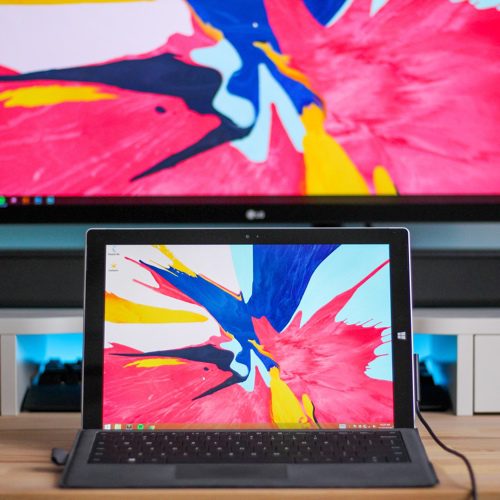


Screen mirroring on Windows 10 to TV with cables
To mirror your Windows 10 screen to a TV using a cable, you can use either an HDMI cable or a VGA cable, depending on the available ports on your devices.
Connect one end of the HDMI cable to your Windows 10 PC’s output port and the other to an available HDMI input port on your TV. Then, select the appropriate HDMI input source using your TV’s remote control. Your Windows 10 screen will appear on your smart TV.
Screen mirroring on Windows 10 to TV wirelessly
If you prefer a wireless solution, there are several adapters and software options available. Here are two popular methods:
Wireless display adapters
Some popular adapters include the Microsoft Wireless Display Adapter, Google Chromecast, and Roku Streaming Stick. These adapters connect to your TV’s HDMI port and allow you to mirror your Windows 10 screen wirelessly.
Go to the display settings of your wireless adapter and click the “connect to a wireless display” option. Select the name of your smart TV from the list of available devices. Your Windows 10 screen will appear on your smart TV.
FlashGet Cast
FlashGet Cast is a versatile screen mirroring software that supports various devices and platforms, including Windows, iOS, Android, and Mac. To use FlashGet Cast for screen mirroring Windows 10 to a smart TV, follow these steps:
- Download, install, and launch the FlashGet Cast app on your Windows 10 PC.
- Go to your smart TV’s internet browser and access the web version of FlashGet Cast. Ensure that your smart TV and the Windows 10 PC are connected to the same WiFi. Upgrade your FlashGet Cast membership to a premium version if you want to use different Wi-Fi networks like the Internet.
- Enter the 9-digit code shown on your smart TV into your Windows 10 PC’s FlashGet Cast app.
- Allow the necessary connection permissions if prompted. Your Windows 10 screen will be displayed on your smart TV.
How to mirror iPhone/Android screen to Windows 10
Screen mirroring is not limited to mirroring your Windows 10 screen to a TV. You can also mirror the screen of your iPhone or Android device to your Windows 10 computer. Here’s how you can do it:
FlashGet Cast
FlashGet Cast is a screen mirroring software that allows you to mirror your iPhone or Android screen to your Windows 10 PC. Follow these steps to mirror your phone’s screen using FlashGet Cast.
Let’s check out how to mirror your iPhone/Android screen to Windows 10 PC:
Step 1. Launch the FlashGet Cast app on your PC and select the “USB” option.
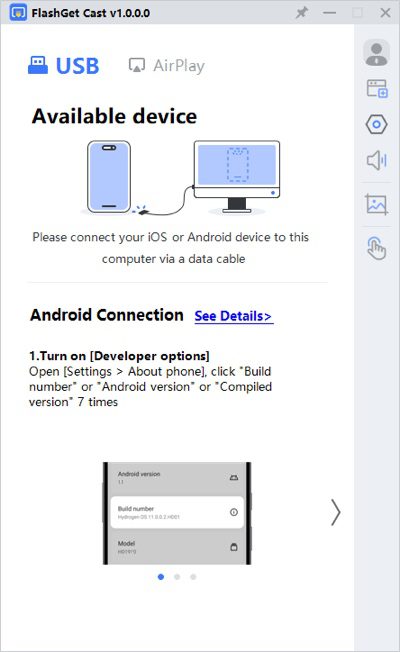


Step 2. Connect your iPhone or Android phone to your Windows 10 PC.
Step 3. Select your device from the FlashGet Cast app on your PC.
Step 4. Click “Trust” on the option that appears on your iPhone. Click “Enable USB Debugging” on the option that appears on your Android.
Step 5: Screen mirroring from your iPhone or Android phone will start.
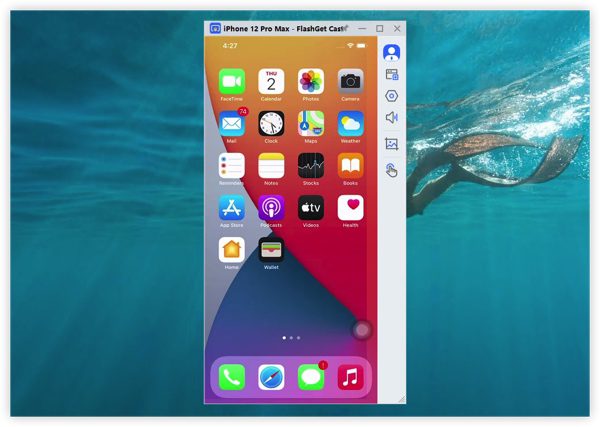


Screen mirroring app for Windows 10
If you’re looking for an all-in-one screen mirroring solution for your Windows 10 PC, FlashGet Cast is an excellent choice. It offers various features and compatibility with different platforms, making it a convenient option for screen mirroring.
FlashGet Cast [All in One]
FlashGet Cast is a comprehensive screen mirroring app that supports multiple platforms, including Windows, iOS, Android, and Mac. With FlashGet Cast, you can mirror your device’s screen to your Windows 10 PC effortlessly.
Here are its main features and benefits:
Cross-platform compatibility
FlashGet Cast supports screen mirroring from various devices, including Windows, iOS, Android, Mac, and Web. This allows you to mirror screens across different platforms seamlessly.
Easy setup
Installing and setting up FlashGet Cast is straightforward. Just download the app on your device. In most cases, you can mirror your device to smart TVs without installing the app on your TV by using browser.
Reliable performance
FlashGet Cast ensures stable and high-quality screen mirroring, up to 1080p display, providing you with a smooth and enjoyable experience.
Multiple devices mirroring
You can mirror some devices to your PC / TV at the same time using FlashGet Cast.
Additional functionality
Along with screen mirroring, FlashGet Cast offers features like screen recording, annotation tools, and remote control capabilities in the premium version. These additional functionalities enhance your screen mirroring experience and allow for more interactive collaborations.
Problems you may have while screen mirroring on Windows 10
While screen mirroring on Windows 10 is generally a seamless experience, you may encounter some issues. Here are a few common problems and their potential solutions:
Adapter not working
If you’re using a wireless display adapter or any other hardware adapter for screen mirroring and it’s not working, try the following:
- Confirm that the adapter you’re using is compatible with both your Windows 10 PC and your TV.
- Check for any available firmware or driver updates for your adapter. Updating the firmware or drivers can often resolve compatibility issues and improve performance.
- Sometimes, a simple restart of your Windows 10 PC, TV, and adapter can fix connectivity issues.
- If you’re using an HDMI-based adapter, connect it to a different HDMI port on your TV. Some HDMI ports may have specific features or limitations.
- Consult the manufacturer’s instructions to learn how to reset your adapter to its default settings. This can help resolve any configuration issues.
No sound while screen mirroring Windows 10 to TV
If you’re experiencing no sound while screen mirroring your Windows 10 PC to a TV, consider the following solutions:
- Ensure that the volume on both your Windows 10 PC and TV is not muted or set too low.
- Verify that the correct audio output is selected on your Windows 10 PC. Right-click on the volume icon in the taskbar and select “Open Sound Settings.” Under the “Output” section, choose the correct audio output device.
- Try restarting both your Windows 10 PC and TV to refresh the audio connection.
- Check for any available updates for your audio drivers on your Windows 10 PC. Outdated drivers can sometimes cause sound-related issues.
PC not found
If you’re having trouble finding your Windows 10 PC when attempting to mirror your phone’s screen, try these solutions:
- Make sure both your phone and Windows 10 PC are connected to the same Wi-Fi network. In some cases, different Wi-Fi networks can prevent device discovery.
- Temporarily disable any firewall or antivirus software on your Windows 10 PC, as they might block the connection between your phone and PC.
- On your Windows 10 PC, go to Settings > System > Projecting to this PC and ensure that the “Windows PCs and phones can project to this PC when you say it’s OK” option is selected.
- Restart both your phone and Windows 10 PC to refresh the network connections.
People also ask
Read the answers to the questions that most people ask while doing screen mirroring Windows 10.
Final words
Screen mirroring Windows 10 provides a convenient way to share and enjoy content on larger screens. Whether you want to mirror your Windows 10 PC to a smart TV or mirror your iPhone or Android device’s screen to your computer, various methods and software are available.
We have discussed the ways to mirror your iPhone, Android devices, and Windows 10 PC to other devices like a smart TV in this article using the most convenient apps like FlashGet Cast.
By following the instructions in this tutorial and troubleshooting any issues that may arise, you can make the most of screen mirroring on Windows 10. Enjoy the enhanced viewing experience and increased productivity that screen mirroring offers.

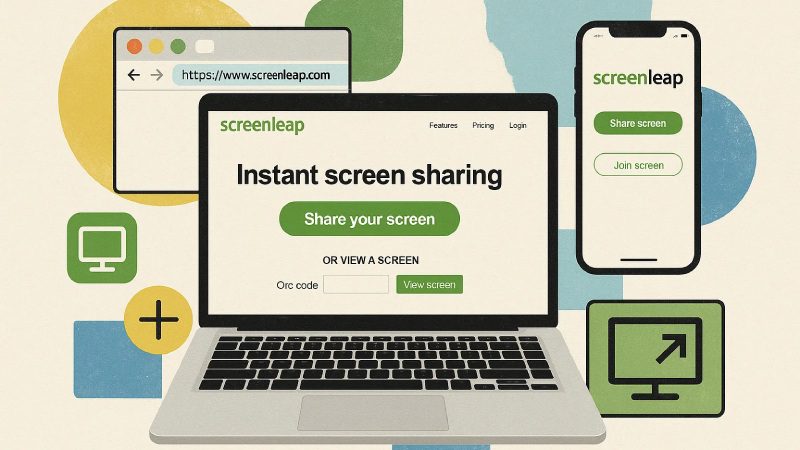
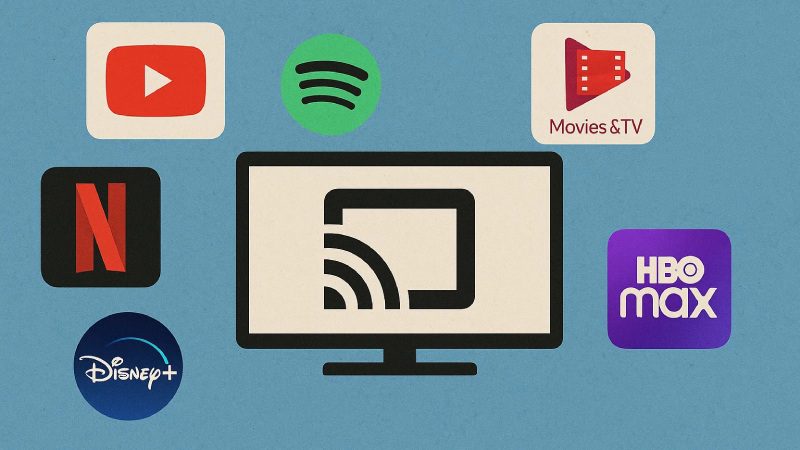
Comments